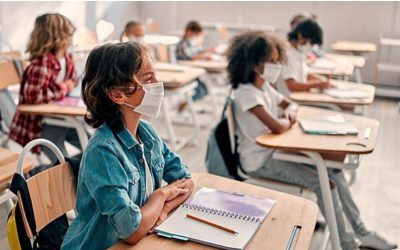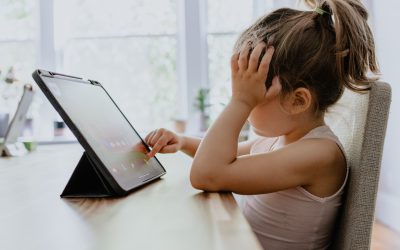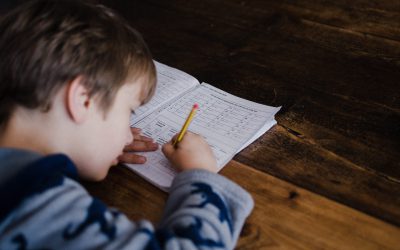Communication with parents and other stakeholders
29 May 2020 | Professionals
Communication in times of crisis is a key factor in managing rising challenges. In a webinar, McKinsey gave valuable insights into how to communicate, with whom, and what. International and national examples illustrate it.1
29-05-2020

- Who to communicate with?
Regular communication with key stakeholders is critical to raising awareness, reaching consensus, and building trust when reopening schools. In a crisis ‘too much communication’ is unlikely. Communication should be customized for all key stakeholders, including school administrators, teachers, parents, students, and private sector (e.g. NGOs). Moreover, vulnerable stakeholders, especially those with low access to technology must be prioritized.
- How to communicate?
A two-way communication style is important where all stakeholders are both informed, but also communicate their own expectations and questions. Such communication should be digital (e.g. websites and applications) as well as physical (e.g. posters and billboards) to ensure outreach to all layers of the society. In addition, regular updates should be provided with new developments, but using a clear and single source for all messages to the same stakeholders (federal, regional, and school levels) to avoid confusion.
- What should be communicated?
Information on interventions and measures to ensure health and safety should be communicated, as well as information on status updates and reports on cases, updates on assessment, curriculum, and teaching methods.
- Why is communication important?
It is important to communicate proactively because regular updates help allay fears, provide reassurance, and build trust and thereby improve readiness to return to schools/reopen schools for all stakeholders. Furthermore, communication and cooperation improve consent and hence effectiveness of the interventions and measures.
Examples of communication methods which are being adopted worldwide: In Singapore, an application called ‘’AskJamie chatbox’’ is implemented to address questions related to COVID-19 for parents. Also, citizens are updated via WhatsApp on the COVID-19 situation.
In Denmark, a handbook of measures and instructions for each segment of the population and education sector is developed. These also include standardized mandatary instruction posters deployed at all schools; these ensure that all schools communicate in the same way and it ensures the quality of the communication. Other examples from Denmark are communicating individually with the parents by sending reassurance letters (about the reopening) from school principals and not only through the Ministry of Education and having a hotline in 25 languages which ensures that immigrants as well are covered.
In Dubai regular circulars and information guides are delivered to school principals and administrators for various systems.
Background information about crisis communication
- The importance of open communication during a crisis and reopening of schools is provided in: Lessons from crisis recovery in schools: how hurricanes impacted schools, families and the community
In this article school and school district-level efforts to reopen schools after substantial damage from hurricanes are investigated. Through a qualitative research design, the following four themes emerged as important to the hurricane recovery process: the importance of communication, resolving tension, coordinating with other services, and learning from the past. School administrators have to proactively plan for catastrophic events such as hurricanes. In addition, it is needed to stabilize the need for open communication within as well as the outside of the school district in order to resolve tensions; to understand the response plan; and to coordinate with other public and private organizations to restore the community. Last, school administrators should use every experience as a learning opportunity for the future.
UNESCO (together with World Bank and UNICEF) developed a report which describes new guidelines about how to effectively reopen schools during the COVID-19 pandemic. In the report it is emphasized to prioritize community engagement and awareness-raising in back-to-school strategies to ensure higher return rates. In the report examples of post crises and communication ways are described as well:
- In post-Ebola Sierra Leone, communicating about the improved school hygiene practices were experienced as effective in encouraging parents to send their children back to school.
- During the SARS epidemic The Hong Kong Education and Manpower Bureau issued health guidelines, titled “Handbook on Prevention of SARS in Schools”. The roles and responsibilities of important stakeholders (parents, students, staff, and schools) were clearly described in this handbook. The measures taken in schools involved the following: mandatory daily temperature monitoring, hygiene routines (e.g. washing hands, cleaning desks), prevention measures, as well as social distancing.
In addition, the report recommends the following:
– Consult and communicate closely with health experts. The timing of school reopening is highly sensitive and often requires a political decision. This should be made based on the status and evaluation of the pandemic, across and within countries. The world is facing an unprecedented and global health crisis. There is no pre-existing knowledge on the nature and behaviour of the epidemic. Evidence is becoming available as ongoing studies are concluded. Decisions concerning public activity and behaviour, including that of reopening of schools, must be made based on advice from designated health experts, epidemiologists and established monitoring mechanisms in each country, to ensure that public health is not in danger (see for example the Republic of Korea).
– Setting up an effective communication and consultation mechanism. It is critical to plan a well-functioning communication and consultation mechanism among central and local authorities, schools, and families as well as across various stakeholders. The importance of consultation, communication and coordination with concerned stakeholders, within and outside the school community, including parents, students and teachers, is paramount, as a means to build consensus and trust, coordinate among various actors and reassure the school population about school safety (see for example Denmark).
[1] The text is an interpretation of the author’s attendance of the McKinsey webinar on May 19, 2020 with further detail from a news search.
See also information for:
Most recent blogs:
How LEARN! supports primary and secondary schools in mapping social-emotional functioning and well-being for the school scan of the National Education Program
Jun 28, 2021
Extra support, catch-up programmes, learning delays, these have now become common terms in...
Conference ‘Increasing educational opportunities in the wake of Covid-19’
Jun 21, 2021
Covid-19 has an enormous impact on education. This has led to an increased interest in how recent...
Educational opportunities in the wake of COVID-19: webinars now available on Youtube
Jun 17, 2021
On the 9th of June LEARN! and Educationlab organized an online conference about...
Homeschooling during the COVID-19 pandemic: Parental experiences, risk and resilience
Apr 1, 2021
Lockdown measures and school closures due to the COVID-19 pandemic meant that families with...
Catch-up and support programmes in primary and secondary education
Mar 1, 2021
The Ministry of Education, Culture and Science (OCW) provides funding in three application rounds...
Home education with adaptive practice software: gains instead of losses?
Jan 26, 2021
As schools all over Europe remain shuttered for the second time this winter because of the Covid...





